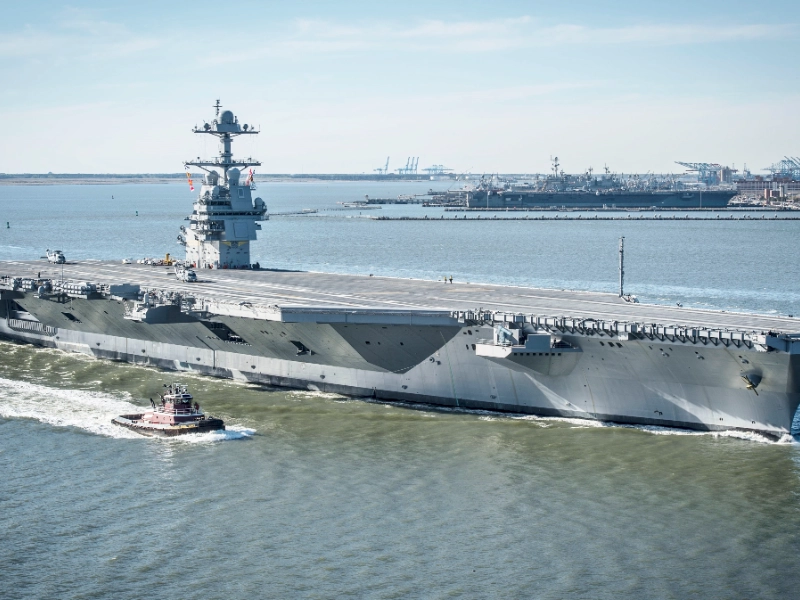Combining state-of-the-art technology with great combat capability, aircraft carriers epitomise navy force projection. These floating air bases keep changing world geopolitics and have transformed marine combat. From nuclear-powered supercarriers to cutting-edge conventional carriers, this thorough guide examines the most powerful aircraft carriers in the world, with an especially eye towards a radical design that questions conventional naval architecture. In contemporary naval operations, every vessel exhibits special capabilities, sophisticated technology, and strategic value.
1. USS Gerald R. Ford (CVN-78)

Representing a quantum jump in navy aviation capability, the USS Gerald R. Ford is the most technologically advanced aircraft carrier ever built. Innovative technologies included in this 100,000-ton supercarrier challenge accepted norms for aircraft carrier design and operation. The Electromagnetic Aircraft Launch System (EMALS), which substitutes electromagnetic technology for conventional steam catapults therefore offering more exact control over launch forces and lowering maintenance requirements, is the most important invention. Similarly modernising aeroplane recovery procedures, the Advanced Arresting Gear (AAG) gear provides increased dependability and lower maintenance costs. Three times the electrical power produced by Nimitz-class carriers, the Ford's nuclear propulsion plant supports modern radar systems, automated weapon handling, and future energy weapons. While cutting the necessary crew by 900 individuals from her predecessors, the carrier's new flight deck and upgraded elevators increase aircraft sortie rates by 33%. Notwithstanding early technical difficulties, the Ford has shown extraordinary operational capability, including the capacity to launch simultaneous aircraft in multiple weather conditions and recoveries. A new paradigm in naval vessel design, the integration of modern automation and digital technology across the ship sets a standard for future carrier development globally.
